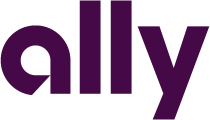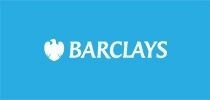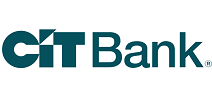So, you’ve diligently limited your spending, and now you need a safe place to stash the heap of change you’ve piled up. It’s time to open a savings account. But how should you choose?
The best savings accounts share two things in common:
- They offer competitive interest rates
- They don’t charge fees that will eat into your dough
Aside from those non-negotiable ‘must-haves’ there are a few other differences from one account to the next that might influence your choice. My list of the best savings accounts includes a variety of options for different types of savers.
What’s Ahead:
- Best Savings Accounts in 2023
- LendingClub High-Yield Savings
- Ally Bank Online Savings Account
- Barclays Online Savings
- Discover Online Savings
- Marcus Online Savings Account
- CIT Savings Builder
- What Is a Savings Account?
- How Do Savings Accounts Work?
- What Is the Difference Between a Checking and Savings Account?
- Should I Open a Savings Account?
- How Do I Open a Savings Account?
- How Many Savings Accounts Can You Have?
- How Much Money Should I Keep in a Savings Account?
- Summary
Best Savings Accounts in 2023
Best for ATM Access: LendingClub High-Yield Savings
Best for Goal-Oriented Savers: Ally Bank Online Savings Account
Best for No Minimum Balance: Barclays Online Savings
Best for Multiple Banking Products: Discover Online Savings Account
Best for Same-Day Transfers: Marcus Online Savings Account
Best for Reward APYs: CIT Savings Builder
LendingClub High-Yield Savings
Best for ATM Access
 APY: 2.07%
APY: 2.07%- Minimum balance: $100 minimum opening deposit
- Fees: No monthly, overdraft, or transfer fees. But there are fees for expediting an ATM or debit card
LendingClub High-Yield Savings has one of the highest APYs out there, offering 2.07% on any balance. And it’s one of the rare savings accounts that comes with a free ATM card and no ATM fees.
The ATM card lets you withdraw money from your account whenever you want (up to $500 a day), in addition to the free internal and external transfers that most savings accounts offer. Deposits are easy, too; you can use LendingClub’s excellent mobile app to deposit checks, or even add cash to your savings account at an ATM.
This account does require a $100 minimum opening deposit, but after that, there’s no minimum balance.
Open a LendingClub High-Yield Savings account or read our full LendingClub Bank review.
Ally Bank Online Savings Account
Best for Goal-Oriented Savers
 APY: 2.00%
APY: 2.00%- Minimum balance: None
- Fees: No monthly or overdraft fees, but there are charges for returned deposits ($7.50) and outgoing wires ($20).
Besides its easy, fee-free process for savings account essentials like online fund transfers and mobile check deposit, Ally Bank’s Online Savings account offers customizable tools to organize your savings however you choose.
Within your Ally account, you can create up to 10 savings “buckets” to hold different amounts for different savings goals. One bucket could hold an emergency fund, for instance, while another could be reserved for a house down payment or a vacation.
If you add the Ally checking account, you get more optional features that help build your savings. Round-ups transfer your spare change from checking account transactions into your savings account. “Surprise Savings” pulls extra funds from checking and transfers them to savings automatically. If you have trouble saving independently, the joint checking and savings account approach at Ally may be worth a look.
Open an Ally Bank Online Savings account or read our full Ally Bank review here.
Barclays Online Savings
Best for No Minimum Balance
 APY: 4.00%
APY: 4.00%- Minimum balance: None
- Fees: No annual or maintenance fees
Based in London, Barclays Online Savings offers accounts to customers outside the United Kingdom via online banking. You can deposit checks online, transfer money to and from your account easily through their mobile savings app, and make unlimited transfers. Barclays doesn’t have ATMs in the United States, so this account can’t be used for instantly retrievable cash. It’s best for long-term savers who can just let the interest grow.
Barclays accounts are technically accessible before you even start saving, with no minimum opening deposit. The 4.00% APY applies to any balance amount.
Open an account with Barclays or read our full Barclays Online Savings review.
Discover Online Savings
Best for Multiple Banking Products
 APY: 3.90%
APY: 3.90%- Minimum balance: None
- Fees: No fees, but there are service charges for outgoing wire transfers.
Discover is a huge company, with the resources to offer not only their Discover Online Savings Account, but also checking accounts, money market accounts, and certificates of deposit (CDs).
One benefit of “doubling up” Discover accounts is that transferring cash between savings and checking is a snap. Discover doesn’t enforce monthly transaction limits, so you can deposit and withdraw from savings as much as you need. Any money you keep in savings qualifies for the 3.90% APY — there are no interest tiers.
Open an account with Discover or read our full Discover Online Savings review.
Marcus Online Savings Account
Best for Same-Day Transfers
 APY: 1.90%
APY: 1.90%- Minimum balance: Anything above $0
- Fees: None (external bank accounts may charge fees for transfers)
Funding your Marcus by Goldman Sachs Online Savings Account is easy and quick, especially if you’re transferring money from another bank account. As long as you’re transferring less than $100,000, your deposits or withdrawals are completed the same day, with no fees attached. And Marcus doesn’t limit the number of withdrawals or transfers you can make within a statement period.
Account holders earn 1.90% APYs on balances starting at a modest $1. That said, Marcus does require a positive balance (anything above $0) for account maintenance. If you don’t have a positive balance for 60 days, the bank will close your account
Open a Marcus Online Savings Account or read our full Marcus by Goldman Sachs review.
CIT Savings Builder
Best for Reward APYs
 APY: Up to 1.00%
APY: Up to 1.00%- Minimum balance: $100 to open an account
- Fees: No fees
The CIT Savings Builder account has different rates or “tiers” of APYs where you earn more interest as your balance climbs. It’s a good incentive for growing your savings.
Here’s how the tiered rates work: Any balance amount can earn the account’s base APY of 0.40%. If you deposit a minimum of $100 each month, you can qualify for the top-tier APY of 1.00%. You’ll also qualify for the higher APY if you maintain a $25,000 monthly balance. See details here.
Electronic transfers are free, but to keep your account secure, CIT may limit how many transfers you can make per month.
Open a CIT Savings Builder account or read our full CIT Savings Builder review.
CIT Bank. Member FDIC.What Is a Savings Account?
A savings account is an account designed to store money that you don’t plan to spend right away. Savings accounts are more liquid than long-term financial accounts (like investment accounts), which means you can typically withdraw money from a savings account without incurring penalties. Liquidity makes savings accounts ideal for short-term and medium-term financial goals.
While you can transfer or withdraw money from a savings account any time you want, banks encourage you to let your savings grow by giving interest on your balance. Accounts with high annual percentage yields (APYs), also called “high-yield” savings accounts, reward you for being patient and maintaining a high balance.
Almost every bank or credit union offers savings accounts, and most have online or online-only options, complete with mobile apps.
Read more: Best High-Yield Savings Accounts Compared
How Do Savings Accounts Work?
Once you open a savings account, you fund it by depositing a check or transferring money electronically from another bank account. The more you add to your savings account, the more you’ll earn from the account’s APY, which typically compounds monthly.
You may need a minimum deposit to open a savings account and/or a minimum balance to keep it open. Some accounts don’t have any minimums.
You can withdraw money from your savings account too, although withdrawals reduce your balance and the interest you can earn. Before 2020, federal regulations meant that banks limited the amount of withdrawals you could make from a savings account each month. But the government relaxed these regulations after coronavirus-related financial disruptions. Nowadays most banks don’t enforce withdrawal limits.
How Much Interest Does a Savings Account Earn?
According to the Federal Deposit Insurance Corporation (FDIC), the national average interest rate for savings accounts was 0.13% as of August 15, 2022. However, some high-yield savings accounts offer much higher rates than this (including all the accounts on my list).
It’s important to remember that most APYs are variable, which means they may change over time. The APY you get when you open your account might not be the APY you get the next year. When the Federal Reserve raises or lowers interest rates across the country, banks and credit unions will raise and lower their interest rates in the same direction.
Read more: How to Get the Best Savings Account Interest Rate
Can You Write a Check from a Savings Account?
You typically can’t write a check from a savings account. If you want to write a check using savings funds, the easiest way is to transfer the money to a linked checking account. Banks usually don’t charge for this type of transfer.
Some banks will issue you an official bank check from your savings if you ask, but this service may come with a fee.
Can I Make Payments from My Savings Account?
You can make payments from a savings account by transferring funds to another linked account — including automatic transfers for regular bill payments — or by withdrawing funds. Each payment reduces your balance and your overall interest, so keep that in mind.
Is Savings Account Interest Taxable?
Any interest you earn on a savings account is taxable income that needs to be reported to the IRS.
If you earn more than $10 in interest during the year, your bank will send you a form to include with your taxes called a 1099-INT form. Even if your bank doesn’t send you this form, you’re still responsible for reporting any amount of interest on your taxes.
Are High-Yield Savings Accounts Safe?
Savings accounts come with government-backed insurance. Should the institution issuing your savings account fail, your balances up to $250,000 will be protected. People who have more than $250,000 in savings can cover their total savings amount by spreading their money between different accounts at multiple banks.
What Is the Difference Between a Checking and Savings Account?
Checking accounts are designed for daily transactions and regular cash flow needs. With a checking account, you’ll get a debit card that lets you make purchases and withdraw cash whenever you want. A lot of people use online checking accounts to directly deposit their paychecks and automatically pay bills. Most checking accounts don’t earn a meaningful amount of interest, so you won’t get any extra benefit from holding more cash than you need in a checking account.
Savings accounts are designed for stashing cash you don’t need for regular expenses. While you can make purchases or withdrawals from a savings account, it’s not as easy as it is with a checking account. And because of APYs, you’re financially rewarded for holding money in the account.
Read more: Best Savings and Checking Account Promotions, Deals, and Offers
Should I Open a Savings Account?
For most people, having at least one savings account is beneficial. It’s a great place to keep an emergency fund, which everyone needs.
You can also use a savings account to plan for financial goals that are several months or years down the road, like:
- House or car down payments
- Vacations
- College
- Weddings
Technically you can use a savings account for super long-term goals like retirement, but you’ll probably get higher returns by investing this money in stocks.
Read more: Beginner’s Guide to Investing
When Is a Savings Account the Best Investment to Earn Interest?
If you’re just using savings for emergency funds that you want to be able to access quickly, or for a goal you hope to hit within a year or two, savings accounts are your best bet.
Investing in the stock market or in a retirement fund can give you much higher potential returns than a savings account can. But stock market investments are inherently risky, meaning there’s no guarantee you’ll earn money on them, and it’s possible you’ll lose money. With savings accounts, you don’t take that risk. Your money is yours to keep. The tradeoff is that it grows at a slower rate than it would in many investments.
Read more: Investing vs. Saving
How Do I Open a Savings Account?
You’ll need to share some basic identifying information to open a savings account, like your address, date of birth, and Social Security Number or other authorized ID number. You’ll also have to provide a government-issued ID such as a driver’s license or passport (the same documents you provide to get paid at a job). If the savings account has a minimum opening deposit, you need at least the minimum amount ready to go.
If you’re opening a savings account online, you can enter this info remotely via the bank or credit union’s online application. You might also be able to open an account by phone or in person with a customer service rep, but many of the best savings accounts offered today aren’t serviced by brick-and-mortar branches.
Read more: Best Online Saving Accounts
How Much Money Do You Need to Open a Savings Account?
Some banks don’t require you to have any money at all to open a savings account. Others may require a token amount, like $1. Many have higher minimums, like $100.
How Old Do You Have to Be to Open a Savings Account?
You need to be at least 18 before you can sign a legal document or contract, which is part of the process of opening a savings account.
If you’re under 18, you can establish a joint account with an adult who signs on your behalf (you’ll still need to provide identification). You’ll have a degree of control over the joint account, though there may be some restrictions. With some accounts the restrictions can be lifted when you turn 18.
How Many Savings Accounts Can You Have?
There’s no maximum number of savings accounts one person can open. The number of savings accounts you should open depends on your savings goals and banking preferences.
If you have several savings goals and some have a longer time horizon than others, or if you want to make sure your emergency fund is kept separate from your other savings, multiple accounts may make sense. You can open them with the same bank or with different banks.
Better yet, you could use one account that lets you divide your balance into different compartments for different goals. Having a single account minimizes the risk of fraud (and the annoyance of remembering multiple passwords).
How Much Money Should I Keep in a Savings Account?
It’s a good idea to have at least three to six months’ worth of living expenses in your savings account, so you have plenty of coverage for emergencies or periods of unemployment. You may choose to keep more in your account if, for instance, you work in a field where it is difficult to find new employment and you might find yourself without a steady income for long stretches of time.
Summary
There are lots of savings accounts out there for different needs. Look for an account with a high APY, minimal to no fees, a low minimum balance, and any extra features that might make the account more convenient for you. The right choice can put you on track to your savings goals faster than you think.


